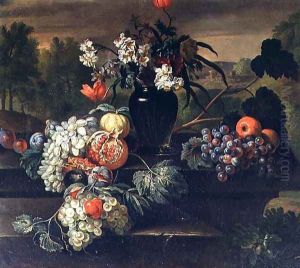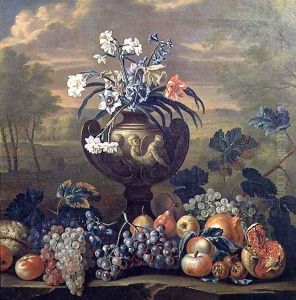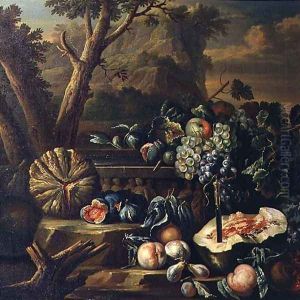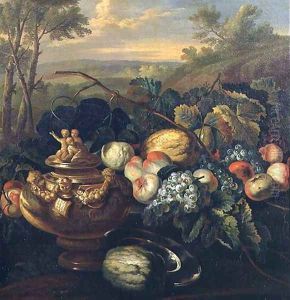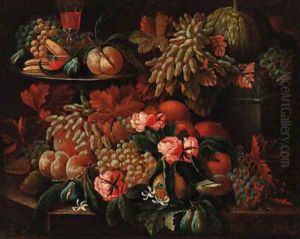(circle of) Ruoppolo, Giovanni-Battista Paintings
Giovanni Battista Ruoppolo was a 17th-century Italian painter known for his still life paintings. Born in 1629 in Naples, then part of the Spanish Empire, Ruoppolo became one of the prominent artists in the Neapolitan Baroque movement. His work was influenced by the vibrant cultural and artistic scene of Naples, as well as by the legacy of Caravaggio and other still life painters such as Giuseppe Recco and Luca Forte.
Ruoppolo's paintings are characterized by their rich detail, vivid coloration, and the skillful rendering of textures. He specialized in still lifes that often featured arrangements of fruits, vegetables, flowers, and sometimes animals, arranged with a naturalistic yet dramatic flair. His compositions are noted for their opulence and the sense of abundance they convey, which was typical of Baroque art in general.
Despite being relatively well-known in his time, Ruoppolo's works were often overshadowed by those of his contemporaries, and as a result, he did not achieve the same level of fame as some other Neapolitan artists. However, his paintings were appreciated for their quality and craftsmanship, and they were collected by local patrons and members of the nobility.
Ruoppolo's influence extended to the 'circle of Ruoppolo,' which includes artists who were directly or indirectly influenced by his style or were part of his workshop. The term 'circle of Ruoppolo' is often used by art historians to attribute works that are similar in style to Ruoppolo but whose authorship cannot be precisely determined.
Giovanni Battista Ruoppolo died in 1693 in Naples. His legacy is preserved in the still lifes that continue to be admired for their beauty and technical excellence. Today, his works can be found in various art museums and private collections, serving as a testament to the richness of the Neapolitan Baroque period.
